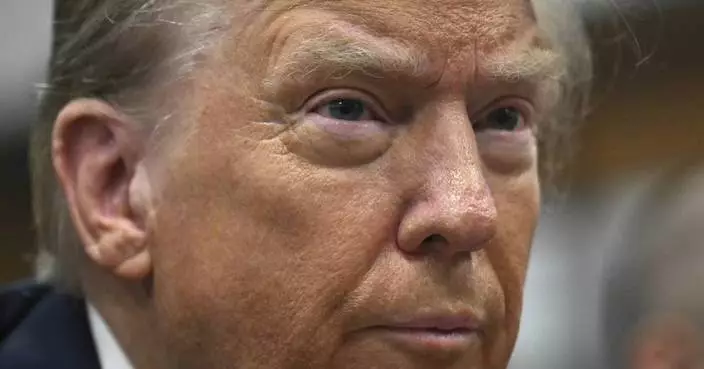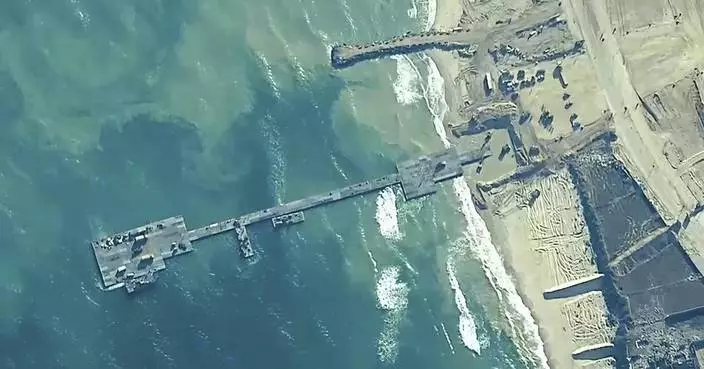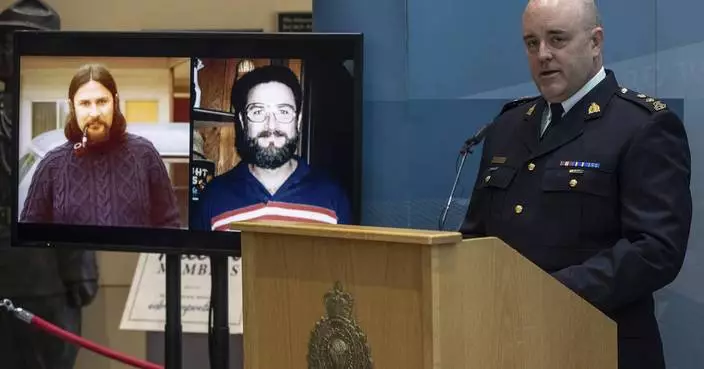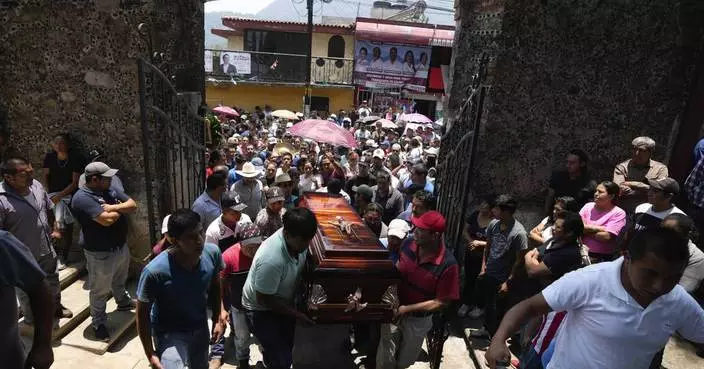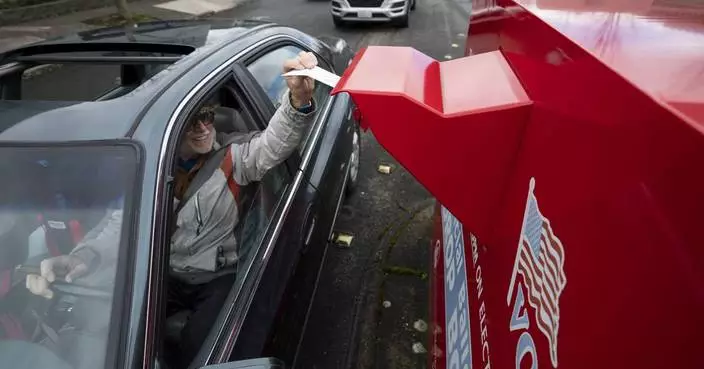Is there life on planets outside our solar system? How did stars and galaxies form in the earliest years of the universe? How do black holes shape galaxies?
Scientists are expected to explore those and other fundamental questions about the universe when they peer deep into the night sky using a new telescope planned for the summit of Hawaii's tallest mountain.
But the Thirty Meter Telescope is a decade away from being built. And Native Hawaiian protesters have tried to thwart the start of construction by blocking a road to the mountain. They say installing yet another observatory on Mauna Kea's peak would further defile a place they consider sacred.
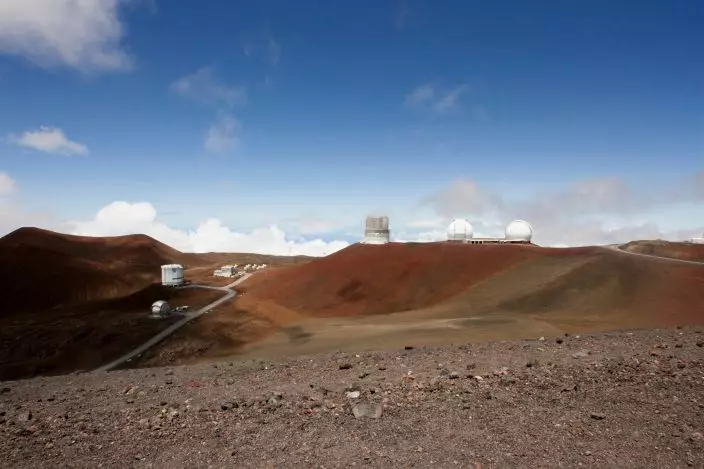
FILE - In this Aug. 31, 2015, file photo, observatories and telescopes sit atop Mauna Kea, Hawaii's tallest mountain and the proposed construction site for a new $1.4 billion telescope. Astronomers using a giant telescope planned for Hawaii's tallest peak will be able to study how the earliest galaxies formed not long after the Big Bang more than 13 billion years ago, which will inform humanity's understanding of how the universe came to be what it is today. They will be able to study planets orbiting stars other than our own with much greater detail. (AP PhotoCaleb Jones, File)
Activists have fought the $1.4 billion telescope but the state Supreme Court has ruled it can be built. The latest protests could be the final stand against it.
Here's a look at the telescope project and some of the science it's expected to produce.
WHY WOULD THE TELESCOPE BE MORE POWERFUL?

FILE - In this Sunday, July 14, 2019, file photo, a telescope at the summit of Mauna Kea, Hawaii's tallest mountain is viewed. Astronomers using a giant telescope planned for Hawaii's tallest peak will be able to study how the earliest galaxies formed not long after the Big Bang more than 13 billion years ago, which will inform humanity's understanding of how the universe came to be what it is today. They will be able to study planets orbiting stars other than our own with much greater detail. (AP PhotoCaleb Jones, File)
The large size of the telescope's mirror means it would collect more light, allowing it to see faint, far-away objects such as stars and galaxies dating back as long as 13 billion years.
The telescope gets its name from the size of the mirror, which will be 30 meters (98 feet) in diameter. That's three times as wide as the world's largest existing visible-light telescope.
Adaptive optics would correct the blurring effects of the Earth's atmosphere.
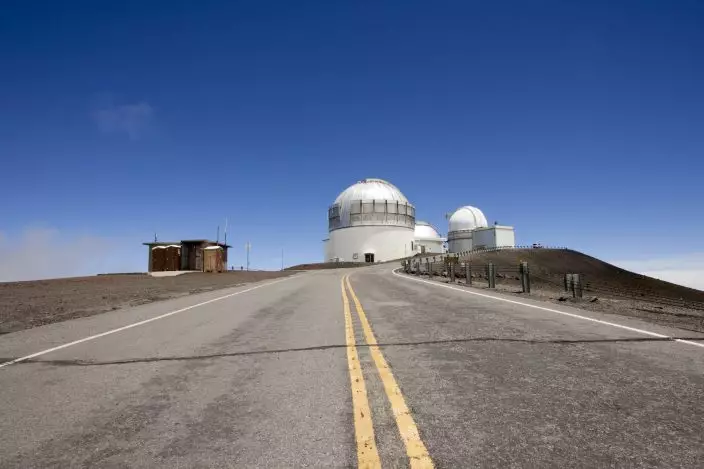
FILE - In this Aug. 31, 2015, file photo, telescopes are viewed on Mauna Kea, the proposed construction site for a new $1.4 billion telescope. Scientists are expected to explore fundamental questions about our universe when they use a giant new telescope planned for the summit of Hawaii’s tallest mountain. That includes whether there’s life outside our solar system and how stars and galaxies formed in the earliest years of the universe. But some Native Hawaiians don’t want the Thirty Meter Telescope to be built at Mauna Kea’s summit, saying it will further harm a place they consider sacred. (AP PhotoCaleb Jones, File)
The telescope would be more than 200 times more sensitive than current telescopes and able to resolve objects 12 times better than the Hubble Space Telescope, said Christophe Dumas, head of operations for the Thirty Meter Telescope.
WHAT RESEARCH WOULD THE TELESCOPE DO?
— Distant planets. During the past 20 years, astronomers have discovered it is common for planets to orbit other stars in the universe. But they don't know much about what those planets — called extrasolar planets or exoplanets — are like. The new telescope would allow scientists to determine whether their atmospheres contain water vapor or methane which might indicate the presence of life.
"For the first time in history we will be capable of detecting extraterrestrial life," Dumas said.
Dumas said the new telescope would use special optics to suppress the light of stars. He compared the technique to blocking a bright street light in the distance with your thumb then seeing insects circling in the fainter light below.
— Black holes. Black holes at the center of most galaxies are so dense that nothing, not even light, can escape their gravitational pull.
Andrea Ghez, a University of California, Los Angeles physics and astronomy professor who discovered our galaxy's black hole, said scientists believe black holes play a fundamental role in how galaxies are formed and evolve.
But so far astronomers have only been able to observe this dynamic in detail in the Milky Way because the next galaxy is 100 times farther away.
The Thirty Meter Telescope would enable scientists to study more galaxies and more black holes in greater detail.
It may also help them understand gravity. Those who doubt the importance should note that GPS-enabled maps on cellphones rely on Einstein's theories about gravity.
"We think of these things as esoteric. But in fact, in the long run, they have profound impacts on our lives," Ghez said.
—Dark matter and dark energy. Humans see only about 4 percent of all matter in the universe, Dumas said. Dark energy makes up about three-quarters and dark matter the rest. Neither can be seen.
"We have no idea what dark matter is and no idea what dark energy is. That's a big dilemma in today's world," Dumas said.
Because mass deforms space and light, Dumas said the new telescope would make it possible to measure how dark matter influences light.
It could do this by studying light from far-away galaxies. The light would take different paths to the telescope, generating different images of the same object.
WHY MAUNA KEA?
The weather at the summit of Mauna Kea tends to be ideal for viewing the skies. At nearly 14,000 feet, its peak is normally above the clouds. Being surrounded by the ocean means air flows tend to be smoother and it has the driest atmosphere of any of the candidate sites.
The mountain is already home to 13 other telescopes.
Ghez used the Keck Observatory there to find our galaxy's black hole. Other discoveries credited to those sites over the years include the first images of exoplanets and the detection of 'Oumuamua, the first object from interstellar space, which turned out to be a comet from a distant star system.
NEXT GENERATION TELESCOPES
Two other giant telescopes are being built in Chile, which also has excellent conditions for astronomy.
The European Extremely Large Telescope will have a primary mirror measuring 39 meters, or 128 feet, in diameter. The Giant Magellan Telescope's mirror will be 24.5 meters, or 80 feet, in diameter.
The Thirty Meter Telescope is the only one expected to be built in the Northern Hemisphere. Because different spots on Earth look out on different parts of the sky, the next-generation ground telescopes will ensure scientists are able to see the entire universe.
The universities and national observatories behind the Thirty Meter Telescope have selected Spain's Canary Islands as a backup site in case they are unable to build in Hawaii.
SAN FRANCISCO (AP) — The man who broke into the home of then-House Speaker Nancy Pelosi seeking to hold her hostage and bludgeoned her husband with a hammer was sentenced Friday to 30 years in prison.
But prosecutors later filed a motion saying the court failed to offer the defendant, David DePape, an opportunity “to speak or present any information to mitigate the sentence" as required by federal rule. They asked the court to reopen the sentencing portion to allow him that option. The court did not immediately respond.
A jury found DePape, 44, guilty in November of attempted kidnapping of a federal official and assault on the immediate family member of a federal official. Prosecutors had asked for a 40-year prison term.
The attack on Paul Pelosi, who was 82 at the time, was captured on police body camera video just days before the 2022 midterm elections and sent shockwaves through the political world. He suffered two head wounds including a skull fracture that was mended with plates and screws he will have for the rest of his life. His right arm and hand were also injured.
Judge Jacqueline Scott Corley sentenced DePape to 20 years for attempted kidnapping and 30 years for the assault, the maximum for both counts. The sentences will run concurrently. He also was given credit for the 18 months he has been in custody.
In its afternoon motion to the court, the U.S. attorney's office said DePape was not given the opportunity by the court to speak before being sentenced and that could present an issue.
DePape's defense, however, said they opposed bringing back their client to court and filed a notice of appeal, according to the filing. Prosecutors and defense counsel did not immediately respond to emails seeking comment late Friday.
The court has 14 days to correct a sentence resulting from error, prosecutors said.
DePape stood silently as he was sentenced and looked down at times. His public defense attorneys had asked the judge to sentence him to 14 years, pointing out that he was going through a difficult period in his life at the time of the attack, had undiagnosed mental health issues and had no prior criminal history.
At trial, DePape testified that he had planned to wear an inflatable unicorn costume and record his interrogation of the Democratic speaker, who was not at her San Francisco home at the time of the attack, to upload it online.
Ahead of the sentencing, one of his defense attorneys, Angela Chuang, told the judge to consider the prison terms being given to those who participated in the Jan. 6, 2021, attack on the Capitol.
"The five most serious sentences for people who were convicted of seditious conspiracy, of literally conspiring to overthrow the government, range from 15 to 22 years," Chuang said.
Corley said the Jan. 6 analogy didn’t adequately reflect the seriousness of breaking into an official's private home. The attack may have a chilling effect on people seeking office in the future, she said.
“They have to think not only, ‘Am I willing to take that risk myself, but am I willing to risk my spouse, my children, my grandchildren?’” the judge said.
Prosecutors asked for the maximum sentence on each count and for DePape to serve 10 years concurrently, giving him a 40-year prison term.
Before sentencing, Christine Pelosi read her father and mother's victim statements, explaining how the violent attack changed their lives. In Paul Pelosi's statement, he explained that 18 months after the attack, he still gets headaches and vertigo and has fainted and fallen twice at home.
“Once you are attacked in such a public and political manner, with such threatening language, you always have to fear a copycat,” Nancy Pelosi said in her statement. “When I encourage people, especially women to consider running for office, physical threats to the family should not even be a factor, but they are.”
Both Paul and Nancy Pelosi said there are still bloodstains on the floor and other signs of the break-in at their home.
“Our home remains a heartbreaking crime scene,” Nancy Pelosi wrote.
DePape admitted during trial testimony that he broke into the Pelosis’ home Oct. 28, 2022, intending to hold the speaker hostage and “break her kneecaps” if she lied to him. He also admitted to bludgeoning Paul Pelosi with a hammer after police showed up, saying his plan to end what he viewed as government corruption was unraveling.
Defense attorneys argued DePape was motivated by his political beliefs, not because he wanted to interfere with Nancy Pelosi’s official duties as a member of Congress, making the charges against him invalid.
Chuang, one of his attorneys, said during closing arguments that DePape was estranged from his family and was caught up in conspiracy theories.
Sky Gonzalez, David DePape’s son, told reporters outside court the 30-year prison term was equivalent to getting a death sentence.
“I think that’s quite sad. I think that’s a really long time, because if you think about it, he’s already nearly 50. Basically, it’s just a death sentence," Gonzalez said before repeating the same conspiracy theories his father wrote about before the attack.
At trial DePape, a Canadian who moved to the U.S. more than 20 years ago, testified that he believed news outlets repeatedly lied about former President Donald Trump. In rants posted on a blog and online forum that were taken down after his arrest, DePape echoed the baseless, right-wing QAnon conspiracy theory that claims a cabal of devil-worshipping pedophiles runs the U.S. government.
Prosecutors said he had rope and zip ties with him, and detectives found body cameras, a computer and a tablet.
Paul Pelosi recalled at the trial how he was awakened by a large man bursting into the bedroom and asking, “Where’s Nancy?” He said that when he responded that his wife was in Washington, DePape said he would tie him up while they waited for her.
“It was a tremendous sense of shock to recognize that somebody had broken into the house, and looking at him and looking at the hammer and the ties, I recognized that I was in serious danger, so I tried to stay as calm as possible,” Pelosi told jurors.
DePape also is charged in state court with assault with a deadly weapon, elder abuse, residential burglary and other felonies. Jury selection in that trial is expected to start Wednesday.
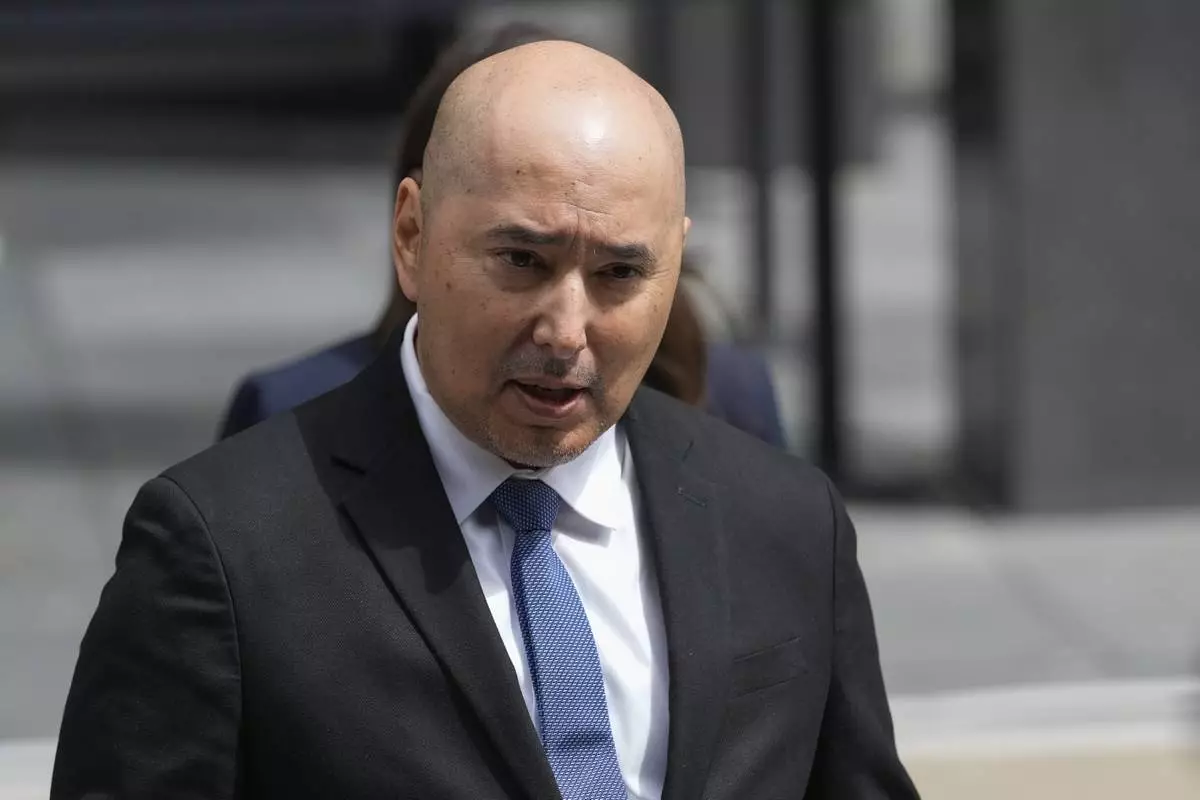
Sergio Lopez, acting assistant agent in charge of the FBI, speaks to reporters after the sentencing of David DePape in federal court Friday, May 17, 2024, in San Francisco. DePape was found guilty last November of attempted kidnapping of a federal official and assault on Paul Pelosi, husband of former U.S. House Speaker Nancy Pelosi. (AP Photo/Godofredo A. Vásquez)

Sergio Lopez, acting assistant agent in charge of the FBI, speaks to reporters after the sentencing of David DePape in federal court Friday, May 17, 2024, in San Francisco. DePape was found guilty last November of attempted kidnapping of a federal official and assault on Paul Pelosi, husband of former U.S. House Speaker Nancy Pelosi. (AP Photo/Godofredo A. Vásquez)
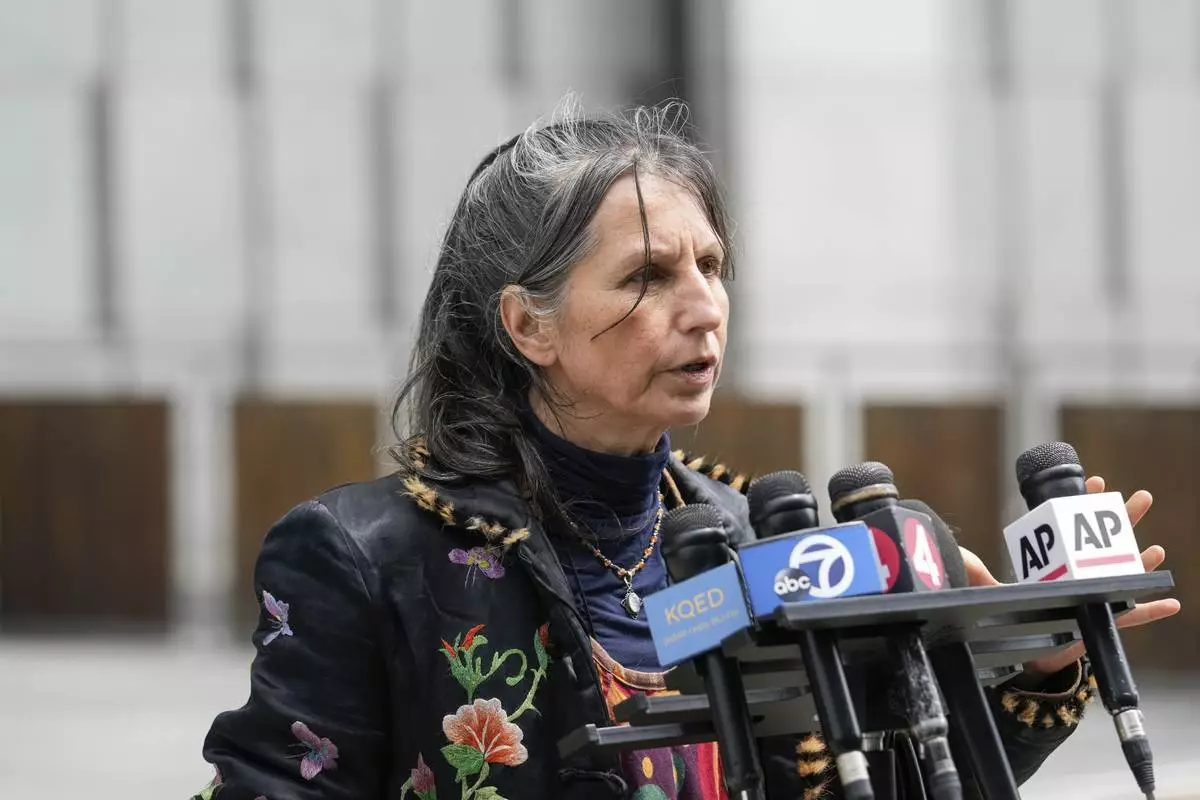
Gypsy Taub, ex-partner of David DePape, speaks to reporters after DePape's sentencing in federal court Friday, May 17, 2024, in San Francisco. He was found guilty last November of attempted kidnapping of a federal official and assault on Paul Pelosi, husband of former U.S. House Speaker Nancy Pelosi. (AP Photo/Godofredo A. Vásquez)

FILE - Paul Pelosi attends a portrait unveiling ceremony for his wife, Speaker of the House Nancy Pelosi, D-Calif., in Statuary Hall at the Capitol in Washington, Dec. 14, 2022. David DePape who was convicted last year in federal court of breaking into former House Speaker Nancy Pelosi's San Francisco home will be sentenced in federal court Friday, May 16, 2024. (AP Photo/J. Scott Applewhite, File)
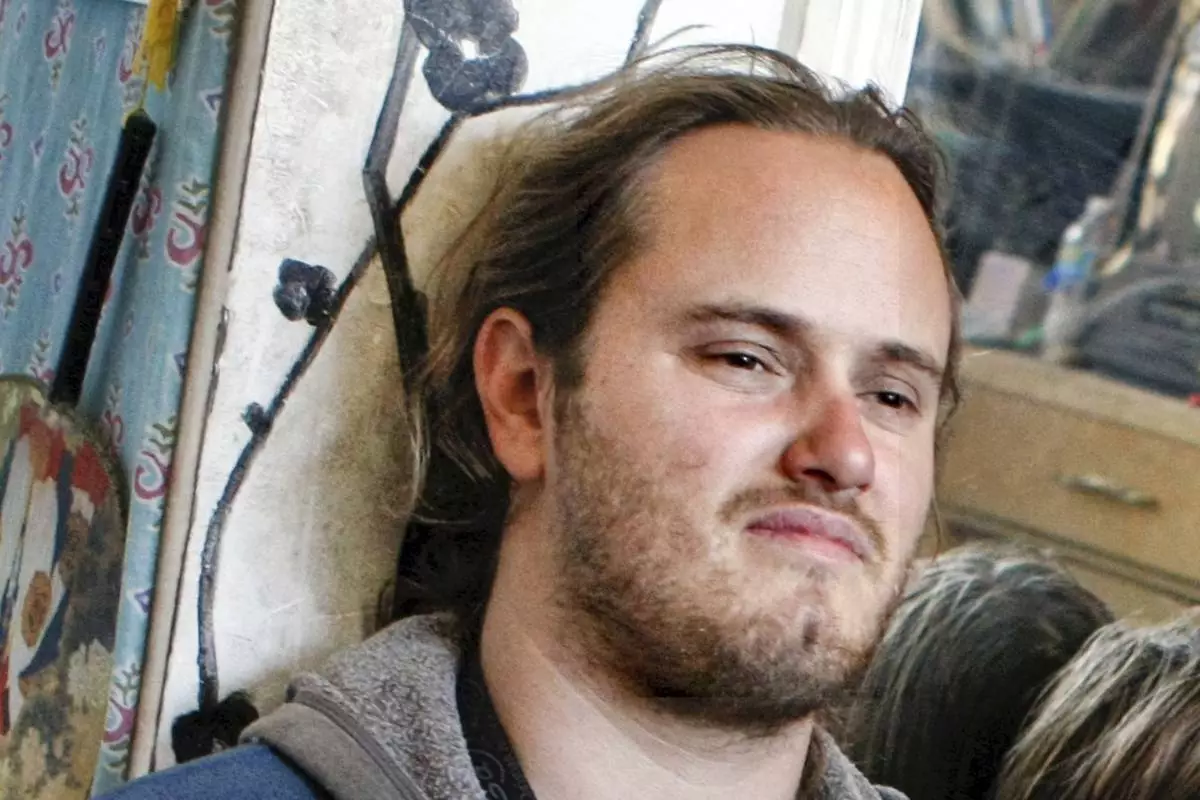
FILE – David DePape is seen, Dec. 13, 2013, in Berkeley, Calif. DePape convicted of attempting to kidnap then-House Speaker Nancy Pelosi and attacking her husband with a hammer is set to be sentenced in federal court Friday, May 17, 2024. (Michael Short/San Francisco Chronicle via AP, File)
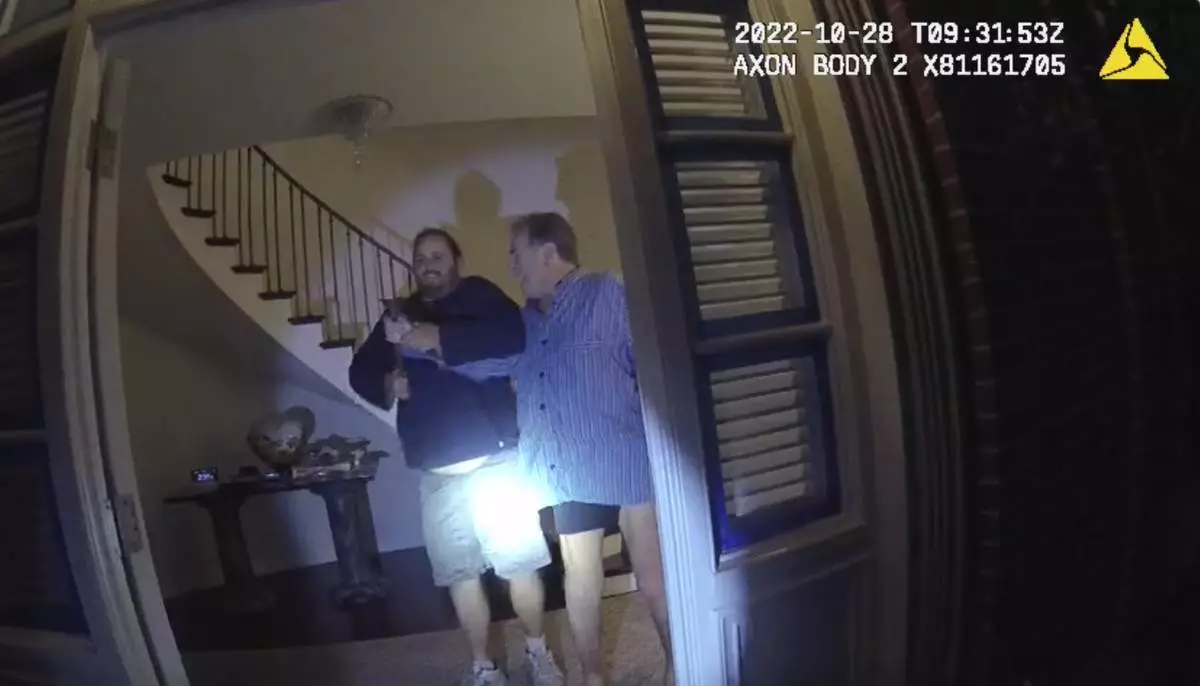
FILE - In this image taken from San Francisco Police Department body-camera video, the husband of former U.S. House Speaker Nancy Pelosi, Paul Pelosi, right, fights for control of a hammer with his assailant David DePape during a brutal attack in the couple's San Francisco home, on Oct. 28, 2022. DePape convicted of attempting to kidnap then-House Speaker Nancy Pelosi and attacking her husband with a hammer is set to be sentenced in federal court Friday, May 17, 2024. (San Francisco Police Department via AP, File)












